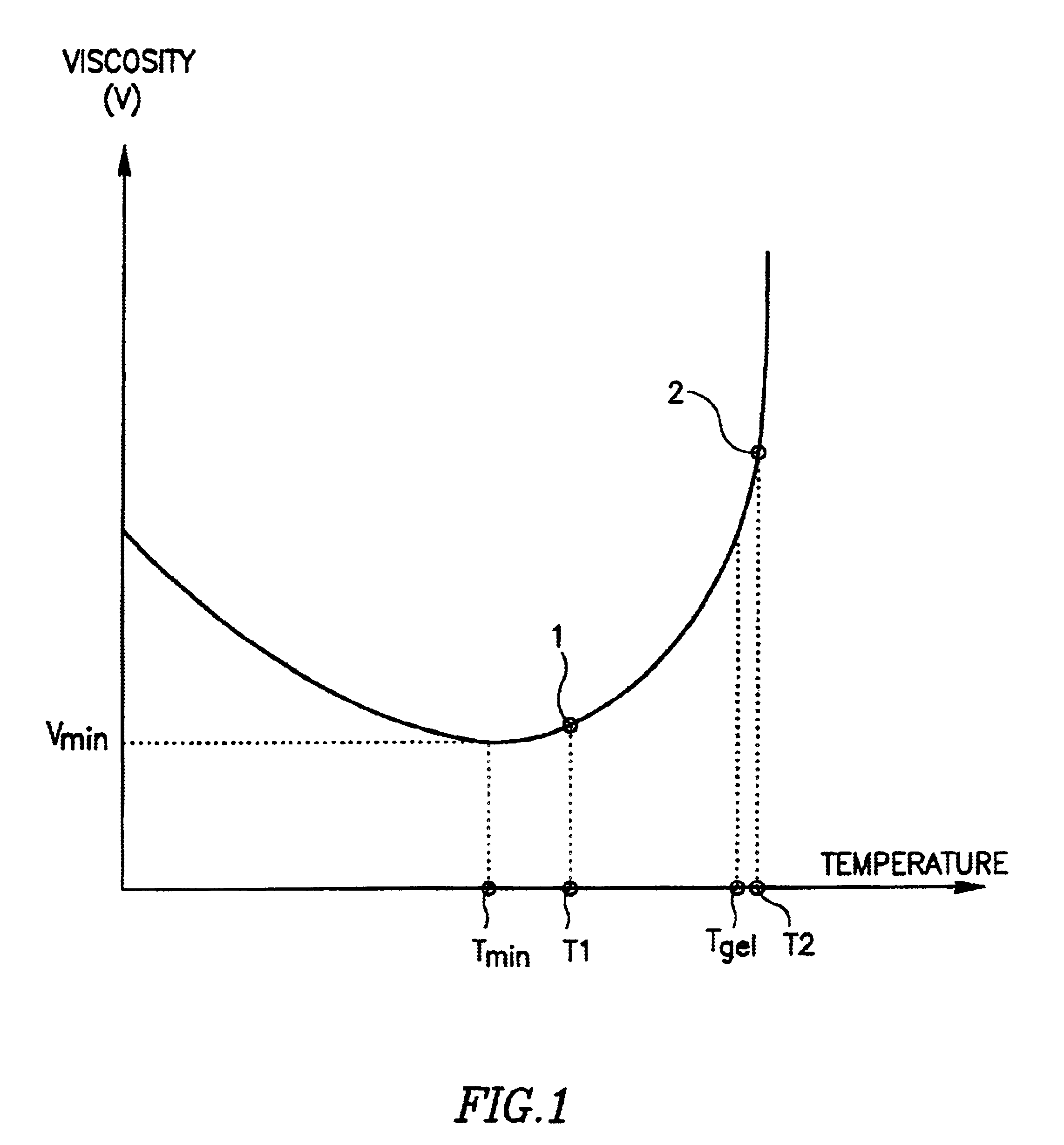Reverse thermal gels and the use thereof for rapid prototyping
a technology of reverse thermal gels and rapid prototyping, which is applied in the direction of 3d object support structures, metal-working apparatus, optics, etc., can solve the problems that the optimal combination of properties of materials used as sms cannot be achieved, and achieve the effect of increasing the strength and reducing the surface tension of the support and/or building composition
- Summary
- Abstract
- Description
- Claims
- Application Information
AI Technical Summary
Benefits of technology
Problems solved by technology
Method used
Image
Examples
Embodiment Construction
Embodiments of the present invention relate to novel polymeric compositions that exhibit Reverse Thermal Gelation (RTG) properties for use as Support Materials (SM) in the manufacturer of three-dimensional objects. These polymers are Temperature Sensitive Polymers that respond with a significant change of properties to a small change in temperature. Temperature Sensitive Polymers exhibit cloud point (CP) or lower critical solution temperature (LCST) in aqueous solutions. Water-soluble Temperature Sensitive Polymers are chosen to give low viscosity liquid at low temperature when dissolved in water and by that to permit easy dispensing at low temperature. Raising the temperature above their gelation temperature (Tgel) will result in solidification of the composition. At its gel position the material has favorable characteristics as a support and building material. The gel layers have the appropriate toughness and dimensional stability to support the model layers during the building pr...
PUM
| Property | Measurement | Unit |
|---|---|---|
| surface tension | aaaaa | aaaaa |
| temperatures | aaaaa | aaaaa |
| LCST | aaaaa | aaaaa |
Abstract
Description
Claims
Application Information
 Login to View More
Login to View More - R&D
- Intellectual Property
- Life Sciences
- Materials
- Tech Scout
- Unparalleled Data Quality
- Higher Quality Content
- 60% Fewer Hallucinations
Browse by: Latest US Patents, China's latest patents, Technical Efficacy Thesaurus, Application Domain, Technology Topic, Popular Technical Reports.
© 2025 PatSnap. All rights reserved.Legal|Privacy policy|Modern Slavery Act Transparency Statement|Sitemap|About US| Contact US: help@patsnap.com


